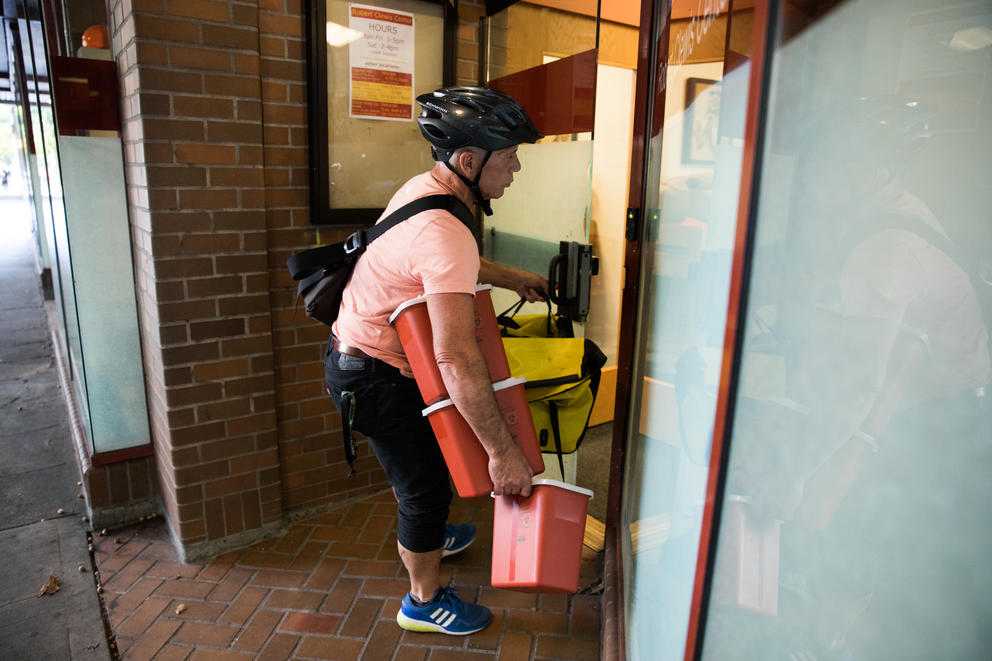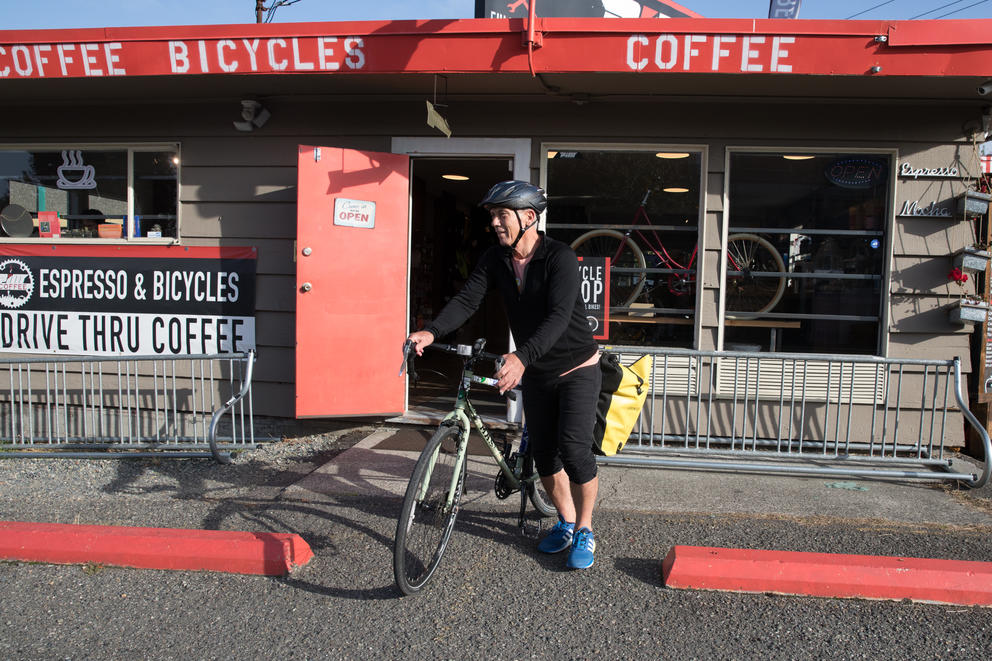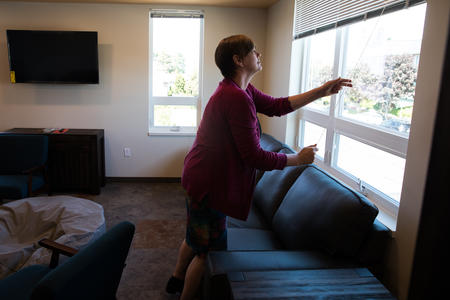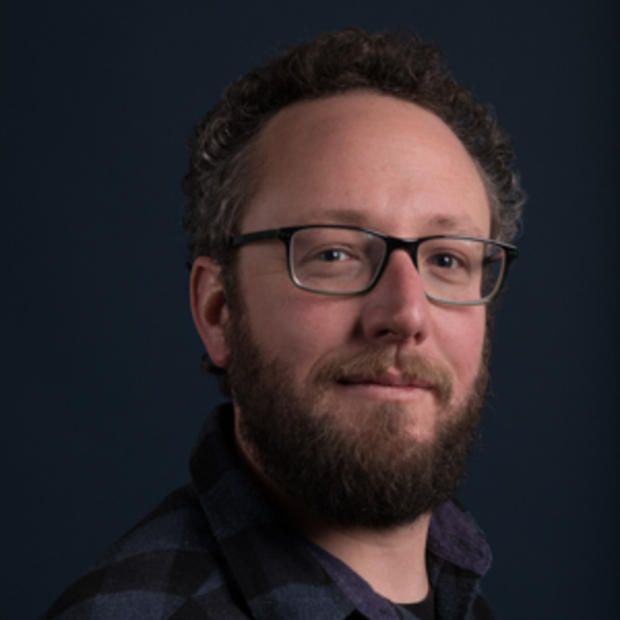The trip was a chance for Hohl, who is 20 and experiencing homelessness, to have some fun on this cloudy August afternoon. But it was also an opportunity for him to talk about his drinking with Johnny Ohta, a chemical dependency counselor for homeless youth at Ryther, a mental health agency in Seattle. An avid sailor, Ohta is also a board member of the Center for Wooden Boats and often takes clients out sailing.
“When was a time you felt like you wanted to do something about your drug and alcohol use?” Ohta asked after a half-hour on the water. Hohl says he began drinking heavily after he ran away from home at 18 and started living on the streets. Today, he moves between Seattle’s youth shelters.
Ohta reminds Hohl about the signs of alcoholism: increased tolerance, withdrawal symptoms and continued use despite negative consequences.
“I’m not saying you’re an alcoholic,” Ohta said. “That’s for you to decide.”
The conversation is an early step in what Ohta, 64, calls “the long game.”
After a quarter-century of working with at-risk youth — and his own lengthy history of drug abuse and recovery — Ohta knows just how long the path can be.
He sticks with young people through years of addiction, recovery and relapses. That sort of long-term, intensive, “there-for-everything” case management is what’s needed to address youth addiction and homelessness, says Ohta. It’s also rare. Many interventions last only a few months, and most case managers burn out quickly from the high stress and low pay. Few in Seattle have worked directly with homeless youth longer than Ohta.
“The real deal is the prevention of adult chronic homelessness,” Ohta said. “You get this window of time to engage with youth before they hit their mid-20s.”
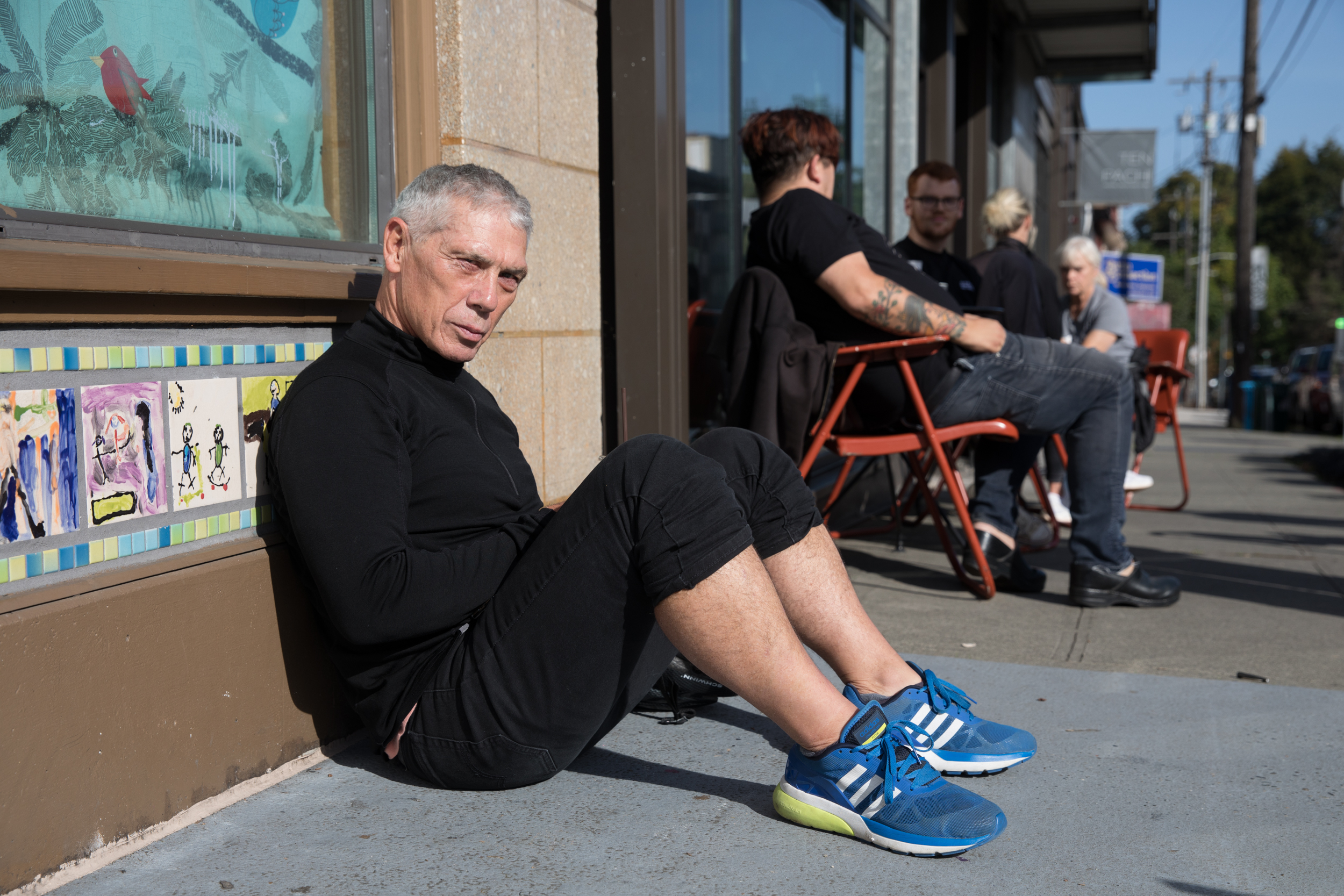
Making the investment
Ohta’s day had started as it usually does: dressed in shorts and sneakers and riding his pale avocado-green bicycle to meet a youth. His first stop was King County Superior Court, which he visits so often that he leaves a bike lock outside.
Ohta’s client was being arraigned on charges of burglary and malicious mischief stemming from an incident six months earlier when the young man had relapsed. The 21-year-old hadn’t been aware of the court date until the previous evening, when he had gone sailing with Ohta and found the summons, which had been mailed to Ohta’s office. He was lucky. Without a fixed address, homeless youths are more likely to miss court appearances and wind up with a warrant for their arrest. And once in jail, they may feel pressure to take a plea deal they might not have accepted otherwise.
Since the relapse, Ohta said, the youth has been focused on staying sober. Ohta planned to work with the lawyer to demonstrate the youth’s progress to the prosecutor and push for reduced charges.
“That can make a huge difference, when you can say to the prosecutor, ‘Look, since this case has been filed, this young person has gotten into housing, and they have a case manager, and they’ve gotten a job,’” said Adrien Leavitt, a public defender in King County whose clients have worked with Ohta.
Such outcomes are possible because Ohta invests a lot of time “just being present” and building trust with young people, Leavitt said.
Ohta will wait with them for hours in court, bring them to meetings with their lawyer, “and then spend time with them afterwards because what they heard was probably scary and traumatic,” Leavitt said.
“When I see someone in the [courtroom] gallery, and then I see that they're sitting there with Johnny, I'm so relieved that they have his support,” Leavitt said. “I just know that that person is in really good hands."
Ohta also spends a lot of time with clients in juvenile detention and in secure crisis residential centers. He isn’t always keen to see his youngest clients released quickly, especially those who are heavily addicted and sexually exploited. “When people are near death, I’m all about them staying there [in juvenile detention] for a while,” he said.
Getting arrested is a turning point for many youths, says Ohta.
He’ll work with them for months and never talk about getting sober. But once they open the door to making changes, he’s ready to smooth their entry into treatment, housing, mental health and other services.
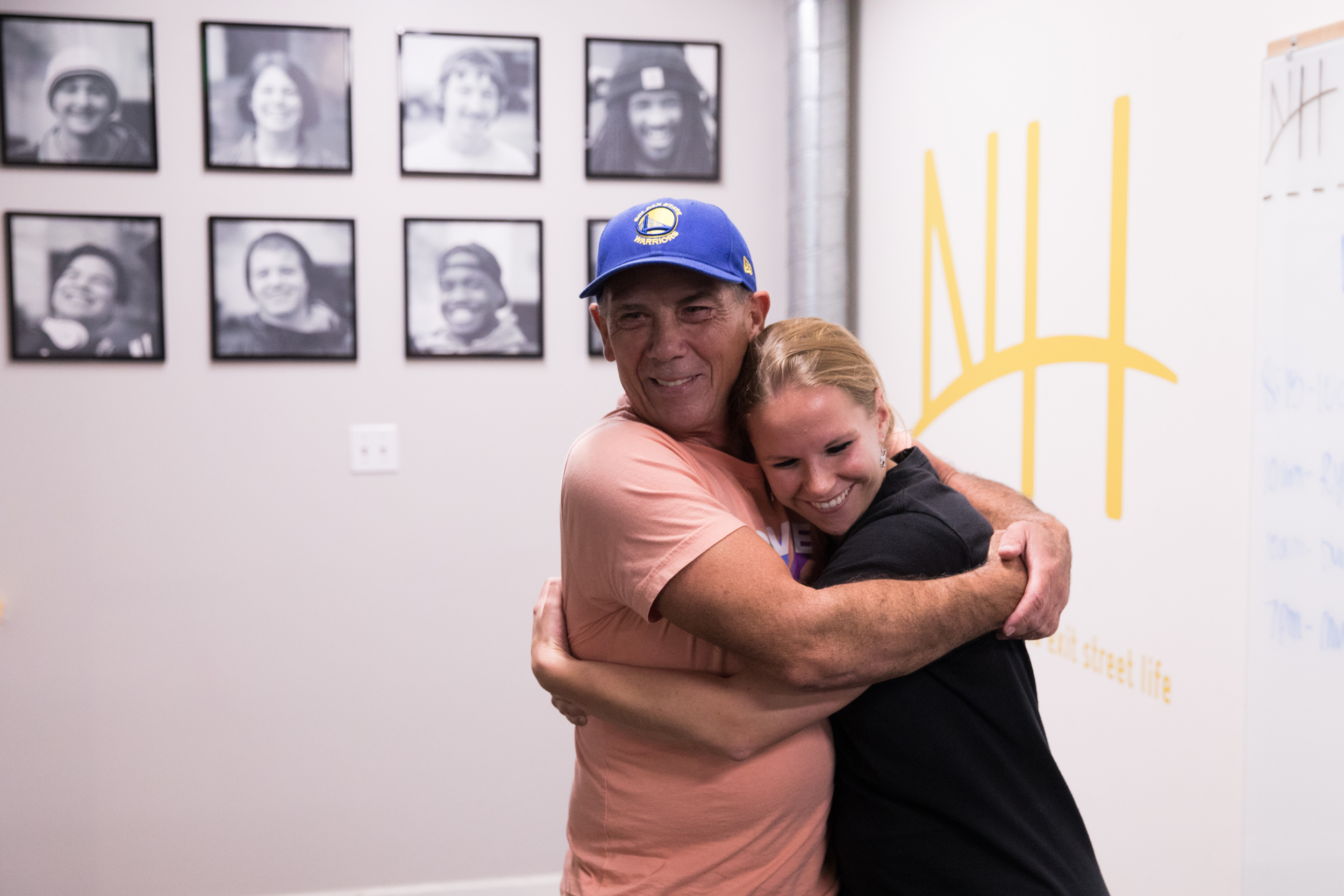
That ability to be patient sets Ohta apart, says Lea Weber, a case manager with New Horizons, a youth shelter and drop-in center in Seattle.
“One of the magical things about Johnny is he actually meets young people where they physically are, and also where they are mentally,” said Weber, who has partnered with Ohta since she began working with homeless youth six years ago.
“A lot of people reference Johnny as this ideal — ‘When I grow up, I want to be like him,’” she said.
His clients do better, Ohta says, when he can partner closely with a case manager like Weber. The problem is, most don’t stick around very long.
Low pay is the main reason for the high turnover, Ohta says. For himself, Ohta has accepted having to adopt “a very simple lifestyle,” because he loves the work. “I never had a day where I woke up and didn’t want to do my job,” he said.
But, he adds, “I want other people to get paid more,” so that they can keep working with young people.
Johnny Ohta carries full sharps containers into to King County Public Health needle exchange in Seattle. This is a daily part of his job; he works with all the youth housing programs in the area, teaching them how to provide these types of harm reduction services and helps dispose of the needles safely. (Matt M. McKnight/Crosscut)
Keys to recovery
Biking along the eastern shore of Lake Union, Ohta points out a couple of his favorite spots to enjoy the view of the lake and downtown. Cycling and being on the water are what keep him sane, he said.
Physical activity also has been a key to Ohta’s recovery from substance abuse that began when he was 11 and progressed to heavy intravenous drug use as he grew up in San Francisco.
Desperate to help him, Ohta’s parents sent the teen to a backpacking camp in California’s Trinity Alps. He spent a dozen summers in the mountains, including working as a youth counselor. Each summer he’d get sober and healthy, then return to the city and get sucked back into his old life.
He wanted to stop using, but “didn’t know how to get out.”
Ohta moved to Vashon Island to restart his life. A few years later, after having a daughter, he entered treatment at age 37. By that point, he said, “I was going to die.”
In January, it will be 20 years since his only relapse.
“My experience tells me that every single addicted person has the possibility of living without sticking a needle in their arm,” he said.
Ohta’s experience also has made him ambivalent about the primacy of harm-reduction approaches to substance abuse, especially the long-term use of opiate-replacement drugs, such as methadone and Suboxone.
Early in his recovery, Ohta took methadone for several months but felt frustrated by being tethered to another drug. When his mother got sick and he wanted to visit her in another state, he was told he couldn’t because he had to show up at the clinic every day.
“And that made me realize that I would never experience freedom by being on methadone,” he said. He eventually entered an abstinence-based program.
At the same time, Ohta says, he knows that medication-assisted therapy saves lives, and he promotes it with clients.
“Young people that are potentially going to die — and I've had many of them die — I am a participant in getting them on methadone and Suboxone,” Ohta said. “And I do a lot of work with that to help them stay alive, because you can’t really find this life of freedom if you’re dead.”
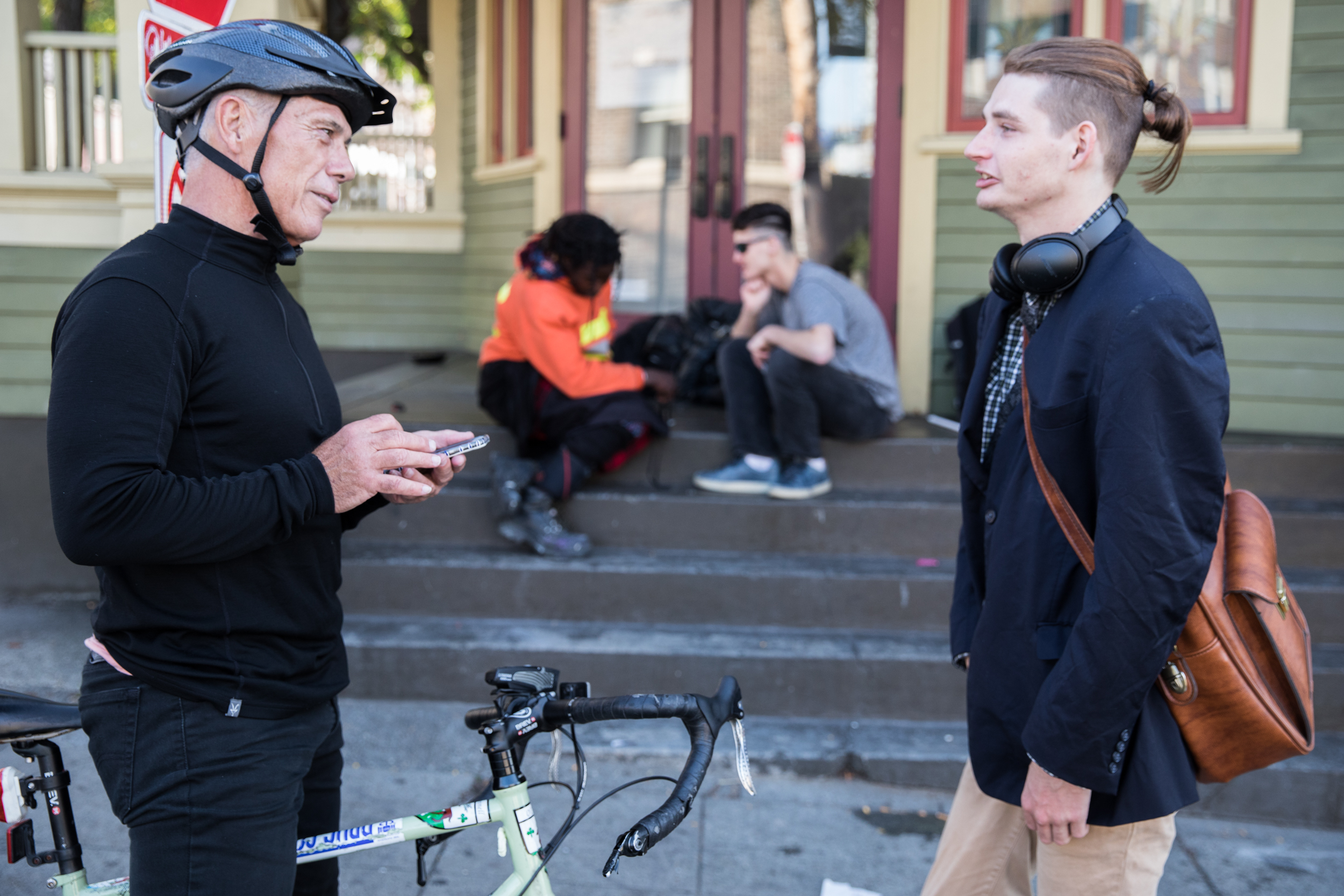
No guarantees
Two of the lives saved by methadone are sitting in the back seat of Ohta’s car at 8:30 a.m. on another August morning.
Ten-month-old Grace, in a pink hoodie with mouse ears, smiles to reveal two new bottom teeth. She waits patiently in her car seat while her mother, Gabby Christopher, runs inside the methadone clinic for her daily dose.
Christopher, now 23, was more than five months pregnant and living in a homeless encampment when Ohta helped her get into a hospital-based rehab program in Seattle. That was the culmination of nearly five years of working together, through Christopher’s deepening heroin addiction and two failed attempts at treatment. Through hospitalizations, domestic violence, jail and living in abandoned buildings.
Grace was born eight weeks early, weighing less than 4 pounds. Ohta visited them in the hospital nearly every day, and then frequently when Christopher and Grace entered a six-month inpatient treatment program for new mothers in Everett.
“This time, going to treatment, I knew I was ready for it,” Christopher said. “And having Grace really helped a lot. She was my motivation in the beginning, and she still is, but now I mostly am doing it for me."
Driving to the methadone clinic, Ohta asks Christopher, now three months out of inpatient treatment, “Are you relieved about stuff?”
“It’s nice knowing where I’m going to sleep at night,” she said. “There’s new things to be stressed about that I guess are easier to handle.”
Ohta asks about her roommates, her mother, her new boyfriend and his family. Mostly he listens.
After breakfast at Denny’s, they stop at a grocery store and Ohta buys a box of 172 diapers for Grace. Then Christopher must be on her way to her daily narcotics anonymous meeting.
“There’s no guarantee about Gabby’s future,” Ohta said after dropping her off. “There’s a lot more work to be done.”
Ohta will continue to be there for that work.
“If I’m on a path of something,” Ohta said, “I want to see that path to the end.”


